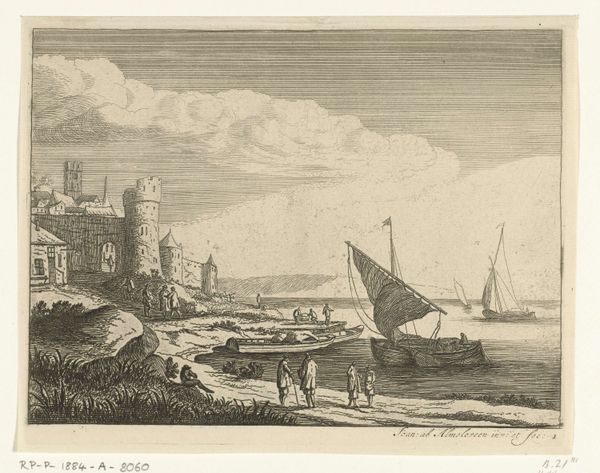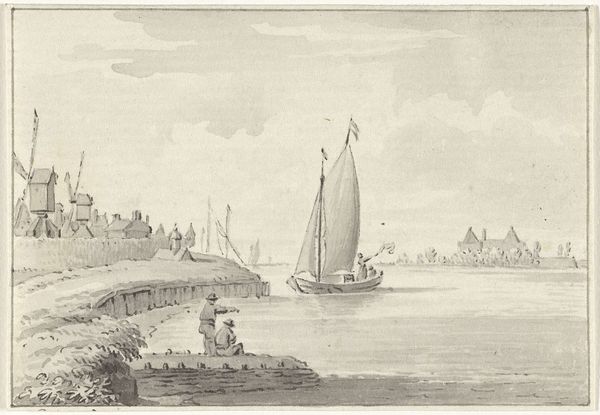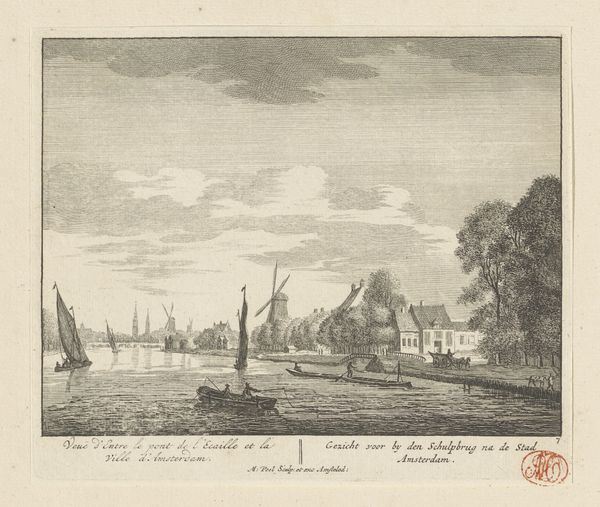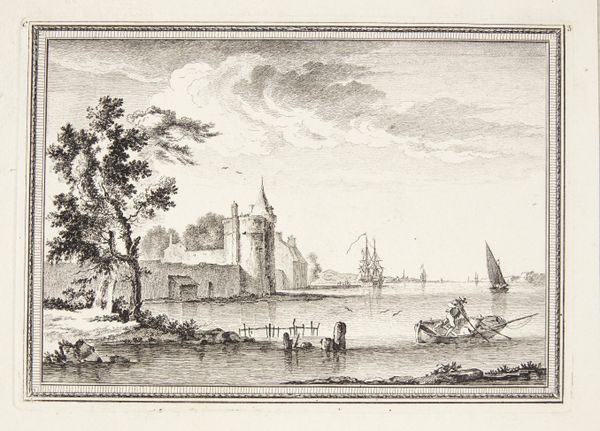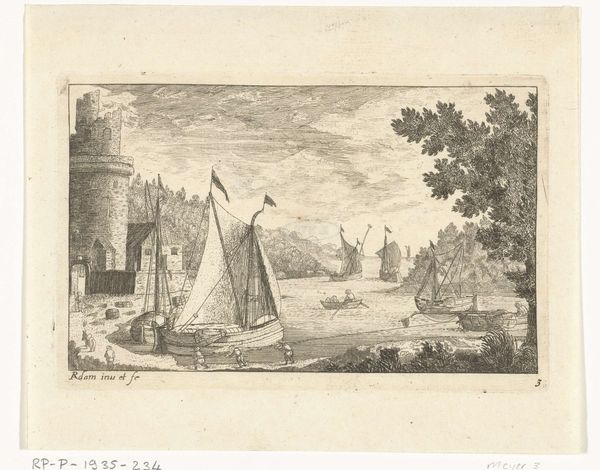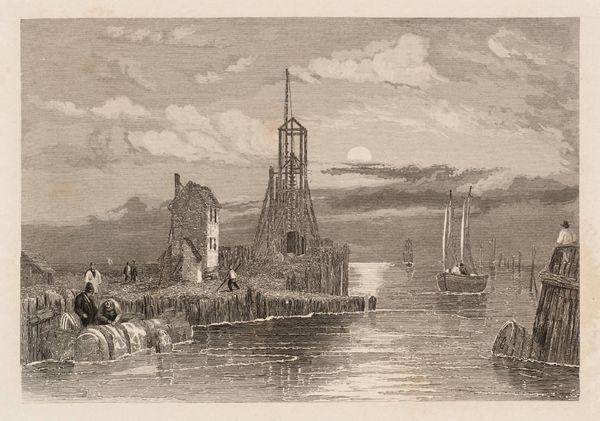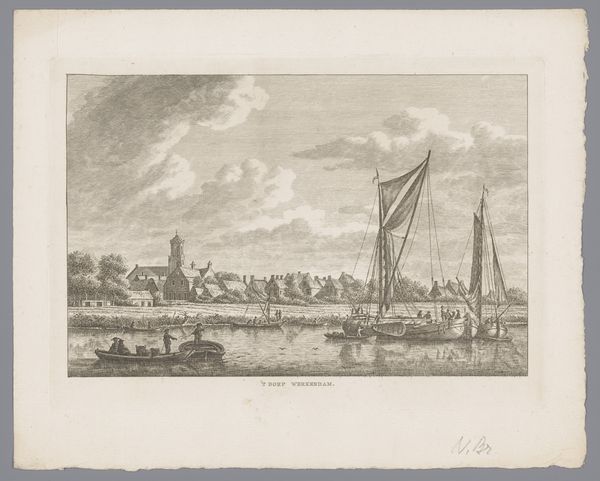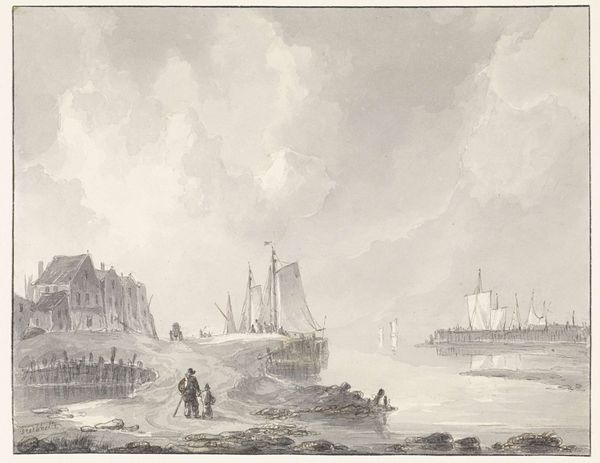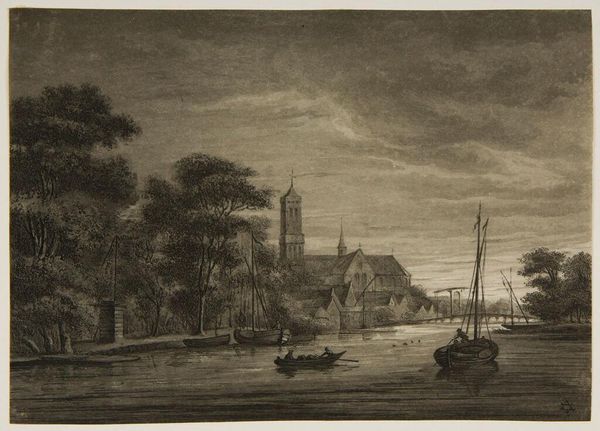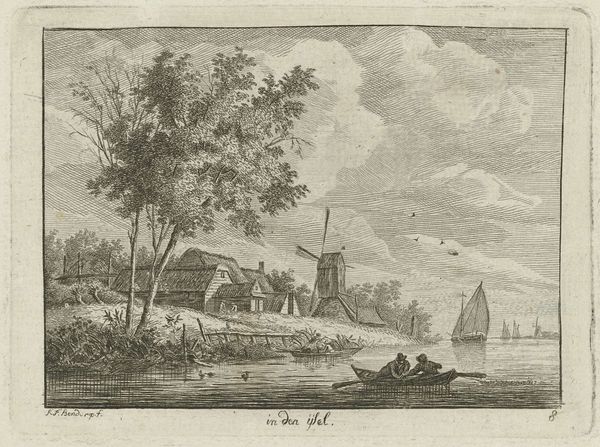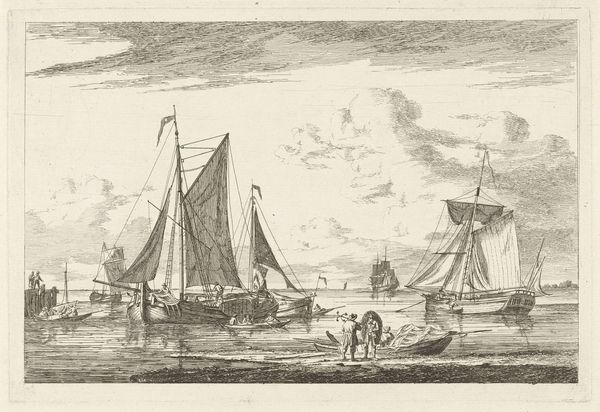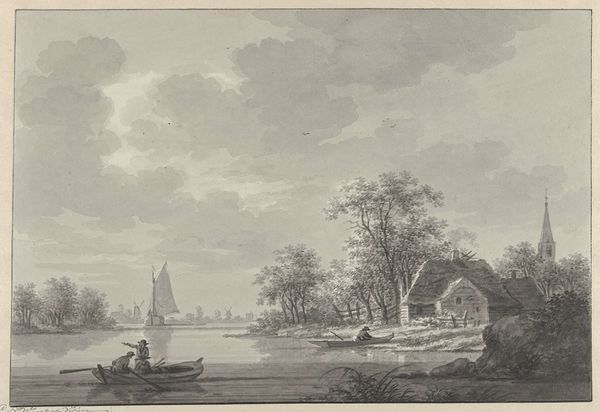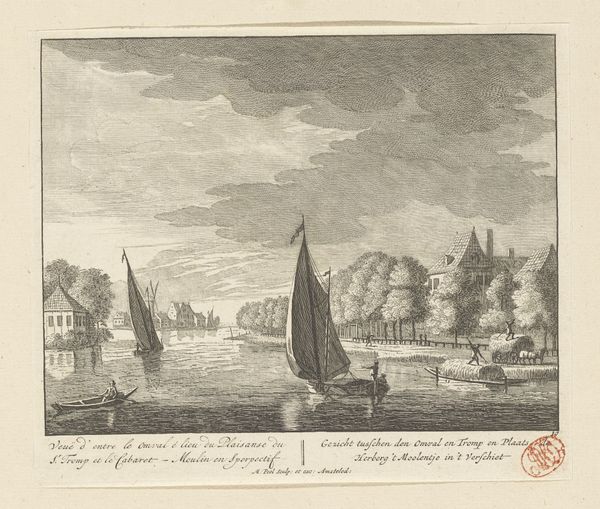
Vlucht van Hugo de Groot in de boekenkist uit Slot Loevestein, 1621 1788
0:00
0:00
print, etching
#
dutch-golden-age
# print
#
etching
#
old engraving style
#
landscape
#
cityscape
Dimensions: height 62 mm, width 90 mm
Copyright: Rijks Museum: Open Domain
Editor: Here we have "Vlucht van Hugo de Groot in de boekenkist uit Slot Loevestein, 1621" a print created by Harmanus Vinkeles in 1788. It’s a pretty detailed etching of a historical event. The scene is dominated by the water, but what really jumps out to me is the boat and how it connects to the buildings along the shore. What aspects of this image strike you? Curator: The way Vinkeles has rendered this scene almost a century and a half after the event itself is fascinating. The etching really speaks to the power of myth-making and how the story of Hugo de Groot's escape became embedded in Dutch national identity. Notice the emphasis on the landscape, and how the 'cityscape' isn't really urban but reflects Dutch control and dependence upon the water. The landscape dominates, and de Groot becomes a man moving across the geography as much as fleeing the State. Why do you think that is? Editor: Maybe to emphasize his insignificance compared to the powerful state that imprisoned him? Or, inversely, maybe highlighting the landscape emphasizes how universal the idea of freedom is; it’s as vast and untamable as nature. Curator: That’s astute. Think about the market for prints like these in the late 18th century. This isn’t just about de Groot as a political figure; it’s also about constructing a narrative of Dutch resilience and ingenuity to a public increasingly aware of both the nation's trading success, but also the injustice perpetrated in their name in the colonies. Editor: So, this seemingly straightforward historical depiction is actually a carefully constructed piece of national propaganda aimed at reinforcing certain ideals? Curator: Exactly! Art, even historical art like this, exists within a complex web of social and political contexts. It encourages the viewer to connect with it in many different ways depending on what they understand of the socio-political climate at the time. Editor: That’s given me a totally new way of thinking about it; I won't be able to look at historical art the same way again!
Comments
No comments
Be the first to comment and join the conversation on the ultimate creative platform.
